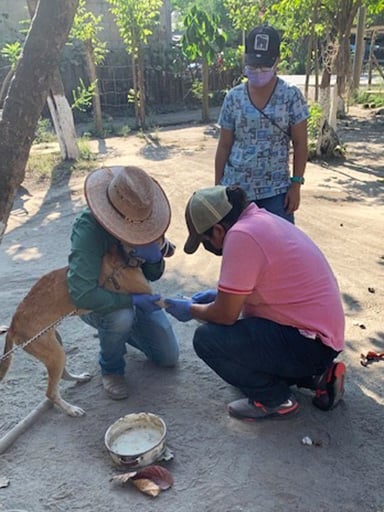Public asked to help mitigate largest avian flu outbreak in US history
Sightings of dead geese in neighborhood ponds are becoming sadly more common today, as the most significant avian flu outbreak in U.S. history continues its march across the country. Nearly 58 million birds have fallen to the wild waterfowl-driven epidemic, with the virus now detected in 47 states.
 A dog is tested for avian flu at a research site in Guatemala. Although rare, bird flu can transmit to pets. |
Although risk to humans remains low, surveillance programs with both the U.S. Department of Agriculture and the Centers for Disease Control and Prevention (CDC), among others, have been in high gear since the outbreak's inception last winter. Only one human case has been detected in the United States so far in a man in Colorado, one of the hardest-hit states.
"While we have been lucky so far, the concern is that with these millions of infections, we could see a mutation that could make the virus more transmissible to humans and begin to cause more severe disease," said Daniel Olson, MD, explaining the need for strong surveillance aimed at halting the economic toll and keeping the public health risk low.
Olson, an associate professor of epidemiology with the Colorado School of Public Health and its Center for Global Health, studies the intersection between humans, animals and the environment, largely at a University of Colorado-associated site in rural Guatemala.
One of Olson's current projects involves evaluating the prevalence of avian and human influenza in backyard poultry. Also a pediatric infectious disease expert with the CU School of Medicine, Olson recently shared more about the outbreak and how everyone, including backyard chicken owners, can help reduce the outbreak's fallout.






